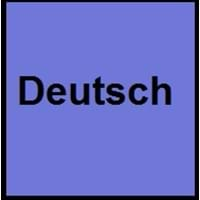Countries
Austria, Belgium, Germany, Italy, Liechtenstein, Luxembourg, Switzerland
China, Hong Kong, Macau, Singapore, Taiwan
National Language
Germany
China, Taiwan
Second Language
North Dakota, United States of America
Republic of Brazil
Speaking Continents
Europe
Asia
Minority Language
Czech Republic, Denmark, Former Soviet Union, France, Hungary, Italy, Namibia, Poland, Romania, Slovakia, Slovenia
Indonesia, Malaysia
Regulated By
Council for German Orthography
Chinese Language Standardization Council, National Commission on Language and Script Work, Promote Mandarin Council
Interesting Facts
- One of the large group of Indo-Germanic languages is German.
- The second most popular Germanic language spoken today behind English is German language.
- Chinese language is tonal, since meaning of a word changes according to its tone.
- In Chinese language, there is no grammatical distinction between singular or plural, no declination of verbs according to tense, mood and aspect.
Similar To
Dutch, Danish, Norwegian, Swedish and English Languages
Not Available
Derived From
Albanian Languages
Not Available
Alphabets in
German-Alphabets.jpg#200
Chinese.jpg#200
Scripts
Latin
Chinese Characters and derivatives
Writing Direction
Left-To-Right, Horizontal
Left-To-Right, Horizontal, Top-To-Bottom
Thank You
Danke
谢谢 (Xièxiè)
How Are You?
Wie geht es dir?
你好吗? (Nǐ hǎo ma?)
Good Night
gute Nacht
晚安 (Wǎn'ān)
Good Evening
guten Abend
晚上好 (Wǎnshàng hǎo)
Good Afternoon
guten Tag
下午好 (Xiàwǔ hǎo)
Good Morning
guten Morgen
早安 (Zǎo ān)
Sorry
Verzeihung
遗憾 (Yíhàn)
I Love You
Ich liebe dich
我爱你 (Wǒ ài nǐ)
Excuse Me
Entschuldigung
劳驾 (Láojià)
Dialect 1
Swiss German
Mandarin
Where They Speak
Switzerland
China, Malaysia, Singapore, Taiwan
Dialect 2
Swabian German
Wu
Where They Speak
Germany
China, United States of America
Dialect 3
Texas German
Yue
Where They Speak
Texas
China, Malaysia, Singapore, Vietnam
Native Name
Deutsch
中文 (zhōngwén)
Alternative Names
Deutsch, Tedesco
Not Available
French Name
allemand
chinois
German Name
Deutsch
Chinesisch
Pronunciation
[ˈdɔʏtʃ]
Not Available
Origin
6th Century AD
1250 BC
Language Family
Indo-European Family
Sino-Tibetan Family
Subgroup
Germanic
Not Available
Branch
Western
Not Available
Early Forms
No early forms
No early forms
Standard Forms
German Standard German, Swiss Standard German and Austrian Standard German
Standard Chinese
Signed Forms
Signed German
Wenfa Shouyu 文法手語 ("Grammatical Sign Language", Signed Mandarin (Taiwan))
Scope
Individual
Individual
ISO 639 6
deus
Not Available
Glottocode
high1287, uppe1397
sini1245
Linguasphere
52-ACB–dl & -dm
79-AAA
Language Type
Living
Living
Language Linguistic Typology
Subject-Object-Verb, Subject-Verb-Object
Subject-Verb-Object
Language Morphological Typology
Fusional, Synthetic
Analytic, Isolating
All German and Chinese Dialects
Most languages have dialects where each dialect differ from other dialect with respect to grammar and vocabulary. Here you will get to know all German and Chinese dialects. Various dialects of German and Chinese language differ in their pronunciations and words. Dialects of German are spoken in different German Speaking Countries whereas Chinese Dialects are spoken in different Chinese speaking countries. Also the number of people speaking German vs Chinese Dialects varies from few thousands to many millions. Some of the German dialects include: Swiss German, Swabian German. Chinese dialects include: Mandarin , Wu. Also learn about dialects in South American Languages and North American Languages.
German and Chinese Speaking population
German and Chinese speaking population is one of the factors based on which German and Chinese languages can be compared. The total count of German and Chinese Speaking population in percentage is also given. The percentage of people speaking German language is 1.39 % whereas the percentage of people speaking Chinese language is 16.00 %. When we compare the speaking population of any two languages we get to know which of two languages is more popular. Find more details about how many people speak German and Chinese on German vs Chinese where you will get native speakers, speaking population in percentage and native names.
German and Chinese Language Codes
German and Chinese language codes are used in those applications where using language names are tedious. German and Chinese Language Codes include all the international language codes, glottocodes and linguasphere.





